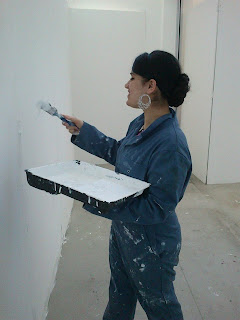BOOKS:-
Bradley Quinn (2009). Textile
Designers. London: Laurence King Publishing. 176-240.
Dawn Devries Sokol (2008). 1000
Artists Journal Pages. 2nd ed. Beverley: Quarry Books. 14-314.
Drusilla Cole (2007). Patterns.
London: Laurence King Publishing. 160-250.
Julius Wiedemann (2009). Illustration
now! 3. 3rd ed. Germany: Taschen. 196,130,228,316.
WEBSITES
Victoria and Albert Museum. (2013). Fashion. Available: http://www.vam.ac.uk/page/f/fashion/. Last accessed 22/06/13.
Victoria and Albert Museum. (2013). Islamic Middle East. Available:
http://www.vam.ac.uk/page/i/islamic-middle-east/. Last accessed 22/06/13.
Victoria and Albert Museum. (2013). Fashion and Textiles. Available: http://www.vam.ac.uk/content/articles/v/the-v-and-a-textiles-and-fashion-collection/. Last accessed 22/06/13.
Wikipedia. (2013). Edwin Hardy Amies. Available: http://en.wikipedia.org/wiki/Edwin_Hardy_Amies. Last accessed 16/04/13.
Phillip Black. (2013). We hear it sing. Available: http://urbanfragment.wordpress.com/category/macro/. Last accessed 15/04/13.
Tracey Boyd. (2013). A Boyd Bazaar. Available: http://aboydbazaar.bigcartel.com/. Last accessed 17/04/13.
Sika
. (2013). Sika Designs. Available:
http://boutique.sikadesigns.co.uk/. Last accessed 22/06/13.
Manchester Art Gallery. (2013). Manchester Art Gallery. Available:
http://www.manchestergalleries.org/. Last accessed 22/06/13.
Norman Hartnell. (2013). Norman Hartnell. Available:
http://www.normanhartnell.com/. Last accessed 22/06/13.
SAA Illustration. (2013). Julie
Ingham. Available:
http://www.saahub.com/illustrator/Julie-Ingham/90110. Last accessed 22/06/13.
Karmik. (2013). Designers. Available: http://www.karmik.in/neetalulla.html. Last accessed 22/06/13.
Neeta Lulla. (2013). Neeta Lulla. Available: http://www.neetalulla.com/main.htm. Last accessed 22/06/13.
National Magazine Company. (2013). Manish Malhotra for UK catwalk debut in aid of The Angeli Foundation. Available: http://www.digitalspy.co.uk/bollywood/news/a454539/manish-malhotra-for-uk-catwalk-debut-in-aid-of-the-angeli-foundation.html. Last accessed 16/04/13.
Wikipedia.
(2013). Sabyasachee Mukherjee. Available: http://en.wikipedia.org/wiki/Sabyasachi_Mukherjee#cite_note-TOI7-9.
Last accessed 15/04/13.
Fashion and Textiles Museum. (2013). The Glamour of Belville Sassoon.Available:
http://ftmlondon.org/ftm-exhibitions/bellville-sassoon/. Last accessed 22/06/13.
Manchester Art Gallery. (2013). Raqib Shaw. Available: http://www.manchestergalleries.org/whats-on/exhibitions/index.php?itemID=95. Last accessed 22/06/13.
Atterley Road . (2013). People Tree. Available:
http://www.atterleyroad.com/brands/people-tree-clothing.html?mkwid=sUxaSB9Ti&pcrid=23168151978&pkwd=people%20tree&pmt=e&plid=&_$ja=kw:people+tree|cgn:People+Tree+-+%5bExact%5d|cgid:4390224018|tsid:424.
Last accessed 22/06/13.
Michelle Reader. (2013). Michelle
Reader. Available: http://www.michelle-reader.co.uk/Home.html. Last
accessed 21/06/13.
Vogue. (2013). Vogue India. Available: http://www.vogue.in/. Last
accessed 22/06/13.
Hannah Werning. (2013). Hannah Werning. Available:
http://www.byhanna.com/info.html. Last accessed 22/06/13.
Wikipedia. (2013). History of Sari. Available: http://en.wikipedia.org/wiki/Sari. Last accessed 22/06/13.

























































